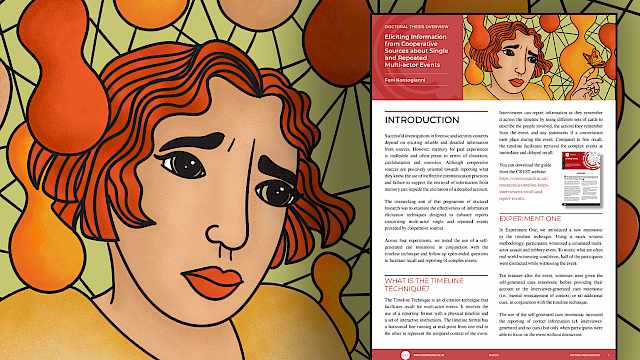Nonverbal mimicry is often considered a ‘social glue’, due to its ability to help bind people together and facilitate harmonious interpersonal interactions.
Introduction
Information obtained from suspects and/or witnesses play a crucial role in the crime solving process. As such, when a suspect or witness is apprehended there is an urgent need for investigators to elicit intelligence successfully and reliably.
The overarching aim of the current doctoral thesis was to investigate whether nonverbal mimicry could be used to increase cooperation, measured as information disclosure, and the underlying psychological mechanisms through which it works to do so.
Across four studies, we identified interpersonal closeness as one of the psychological mechanisms through which mimicry works to increase cooperation, as well as the regions of mimicry (discreet body movements) that are related to closeness. Extending beyond the dyad, we also examined whether nonverbal mimicry observed by a third-party effects willingness to cooperate.
Download Abbie's 'Doctoral Thesis Overview' to read a summary of her experiments as well as the key findings.
Read more
Aron, A., & Aron, E. N. (1986). Love and the expansion of self: Understanding attraction and satisfaction. Hemisphere Publishing Corp/Harper & Row Publishers.
Aron, A., & Fraley, B. (1999). Relationship closeness as including other in the self: Cognitive underpinnings and measures. Social Cognition, 17(2), 140-160. https://doi.org/10.1521/soco.1999.17.2.140
Aron, A., Aron, E. N., Tudor, M., & Nelson, G. (1991). Close relationships as including other in the self. Journal of Personality and Social Psychology, 60, 241–253. doi:10.1037/0022-3514.60.2.241
Boone, R. T., & Buck, R. (2003). Emotional expressivity and trustworthiness: The role of nonverbal behavior in the evolution of cooperation. Journal of Nonverbal Behavior, 27(3), 163-182. https://doi.org/10.1023/A:1025341931128
Chartrand, T. L., & Bargh, J. A. (1999). The chameleon effect: The perception-behavior link and social interaction. Journal of Personality and Social Psychology, 76(6), 893-910. doi:10.1037//0022-3514.76.6.893
Chartrand, T. L., & Lakin, J. L. (2013). The antecedents and consequences of human behavioral mimicry. Annual review of psychology, 64, 285-308. https://doi.org/10.1146/annurev-psych-113011-143754
Copyright Information
This guide is made available under a Creative Commons BY-NC-SA 4.0 licence. For more information on how you can use CREST products see www.crestresearch.ac.uk/copyright/.
All images copyright ©2022 R. Stevens / CREST (CC BY-SA 4.0)




